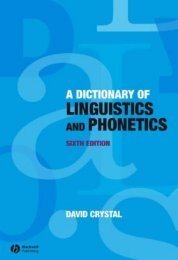url?sa=t&source=web&cd=3&ved=0CC0QFjAC&url=http://www.teachingenglish.org.uk/sites/teacheng/files/B369-Young-Learners-Activity-Book_v10
url?sa=t&source=web&cd=3&ved=0CC0QFjAC&url=http://www.teachingenglish.org.uk/sites/teacheng/files/B369-Young-Learners-Activity-Book_v10
url?sa=t&source=web&cd=3&ved=0CC0QFjAC&url=http://www.teachingenglish.org.uk/sites/teacheng/files/B369-Young-Learners-Activity-Book_v10
Create successful ePaper yourself
Turn your PDF publications into a flip-book with our unique Google optimized e-Paper software.
TeachingEnglish <strong>Young</strong> <strong>Learners</strong> <strong>Activity</strong> <strong>Book</strong><br />
Activities<br />
Alternatives<br />
• Rather than find all the pictures yourself, you could ask the children to cut up and bring to<br />
school pictures of the vocabulary they have learned.<br />
• This activity could be used to revise lexical sets rather than single words or phrases. A picture<br />
of a room could be used to revise furniture, for example, or a picture of a landscape to revise<br />
geographical features. Make sure you leave enough space for the children to write all the<br />
words, perhaps by having a large border around the picture.<br />
• This activity could also be used to revise certain structures, such as the present continuous<br />
Choose pictures showing scenes of activity and ask the children to write what is happening.<br />
No resources?<br />
If you do not have access to a laminator, you can still use pictures but the children can write the<br />
words in their note books, or on the blackboard/whiteboard.<br />
If you don’t have access to suitable pictures, you can fill the basket with realia (real objects)<br />
instead. Children write the words in their books rather than on the object.<br />
© British Council 2012<br />
107





